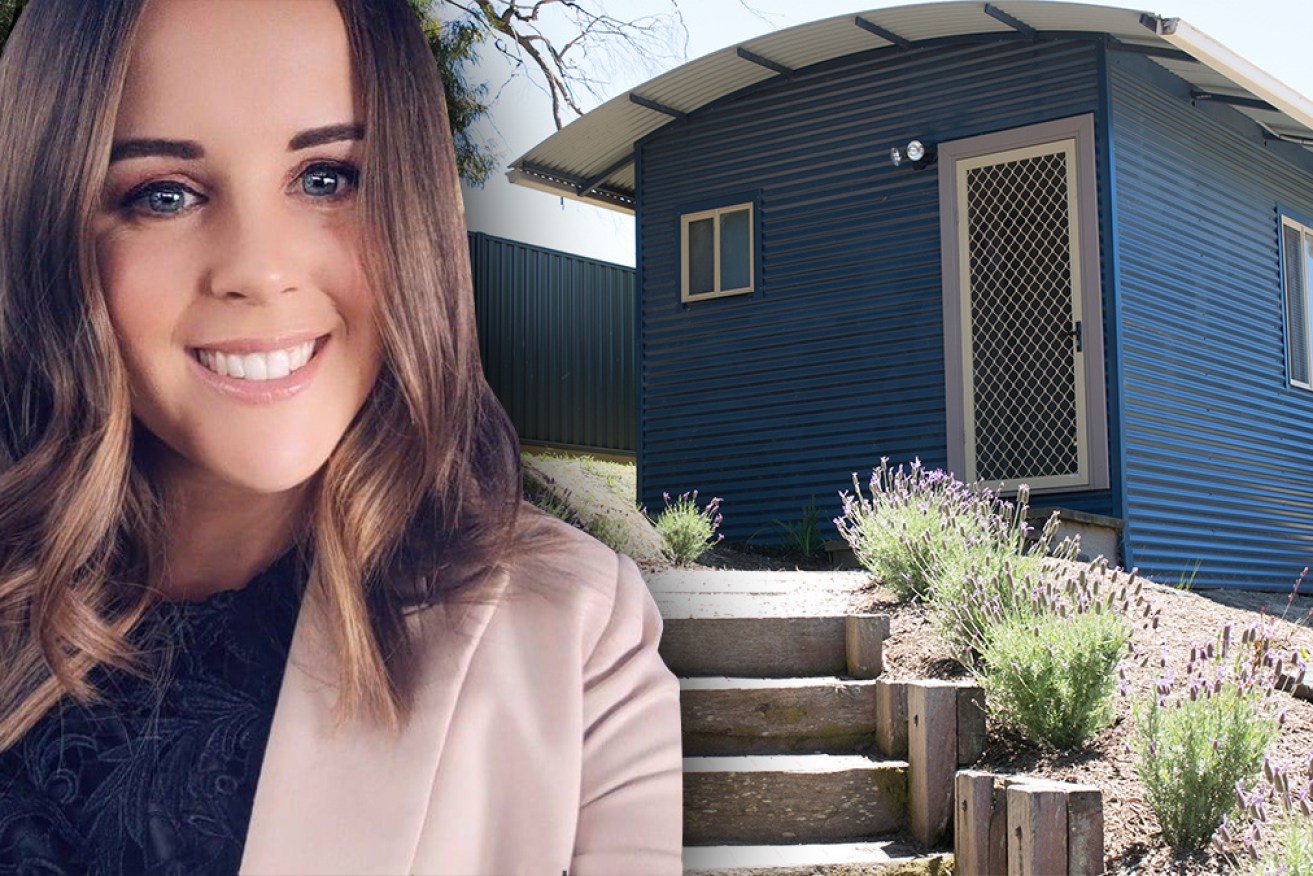Back from the brink of homelessness: The tiny houses making a big difference


Sandi Taylor says her life was changed by one little thing ... a tiny house. Photo: TND/KUC
It’s difficult to understate the importance of having a space to call your own.
Somewhere to shut out the world and the stresses that come with it. A place to reflect and rebuild.
It doesn’t need to be much. But without it, we can’t weave the fragments of our days into a coherent understanding of our lives. Can’t put ourselves first and work towards a future of our own making.
Sandra Taylor (Sandi) knows the feeling.
For while homelessness is synonymous with sleeping rough in the minds of most Australians, more than 100,000 people in Australia are experiencing what’s been described as “invisible homelessness”.
Sleeping on a different couch every night, crammed into bedrooms with three or more people, or living in crisis accommodation, they lack what’s found at the heart of every success story: A stable home.
Sandi had a roof over her head, but there was no stability.
As a child, she shared a bedroom with her sister. Her second sister and brother bunked together in another, and her parents lived in a third. Space and stillness were in short supply.
Then came Alannah, the fifth child in the family.
Alannah was born with cerebral palsy and chronic lung disease. She needed an oxygen tank to survive the first two years of her life, and relied on a gastronomy tube until her 16th birthday.
Her arrival thrust eight-year-old Sandi into adulthood.

Sandi in her teen years.
“It just wasn’t a recipe for a happy household,” Sandi tells The New Daily.
“Thinking about that oxygen machine, I can hear the buzz in my head now – it’s chiselled into my brain.”
Cleaning food debris from Alannah’s gastronomy tube and suctioning her nose were other routine tasks for Sandi.
On top of the typical coming-of-age challenges, and the difficulties of living with four siblings, the added chores were often too great an ask.
“There was a lot of babysitting, a lot of young kids being left with me from a young age just because we couldn’t get anyone else,” the 28-year-old recalls.
“It was just a whirlwind of added responsibilities.”
As her parents struggled to manage her sister’s condition, the family home became fraught with tension.
Emotions ran high, and Sandi soon found the simplest way to defuse an argument was simply to leave.
She hung out in parks late into the night, and couch-surfed at various friends’ houses for days on end.
Homelessness loomed on the horizon.
And then it didn’t.
Recognising that teenaged Sandi was at risk of experiencing homelessness, a community service organisation referred her case to the not-for-profit Kids Under Cover (KUC).
The tradies followed soon after, and built a one-bedroom unit in the backyard of the family’s Melbourne home.
Sandi finally had a space of her own, and the spectre of homelessness receded.
“I remember getting told I was getting my very own bedroom that had a bathroom, and I was the happiest kid alive that day,” recalls Sandi.
“It gave me a space where I didn’t have to listen to the hustle and bustle. I could have a shower in my own shower and not fight with anyone.”
Sandi is one of 3200 teenagers helped by KUC, which has undergone numerous evolutions since it was established in 1989.
It started as a house for struggling young mothers.
“But it soon became evident that entrenched the separation of those young people from their families,” says KUC spokesperson Fiona Dickson.
“The real opportunity was to keep families together.”
The change in tack was just as well, given how a series of events and studies since then have demonstrated the superiority of prevention over cure.
In 2015, Wales became the first country to pass a law requiring governments to help people experiencing homelessness find accommodation.
A year later, 65 per cent of people who had presented at the first of the three-stage local government process reported successfully avoiding homelessness.
And two years later, the University of Melbourne found that 63 per cent of people who have experienced homelessness “cite family breakdown or conflict as the main reason for becoming homeless for the first time”.
Sandi doesn’t need an academic study to prove the importance of keeping family together.
For her, it was the difference between forging a successful career and living on the street.
“It kept me at home until I was 17 – until I had the foundations and the skills and the ability to properly live on my own,” Sandi says.
“It just made the world of difference.”








